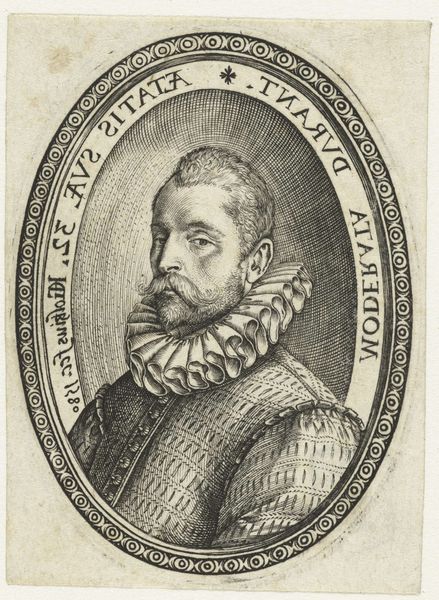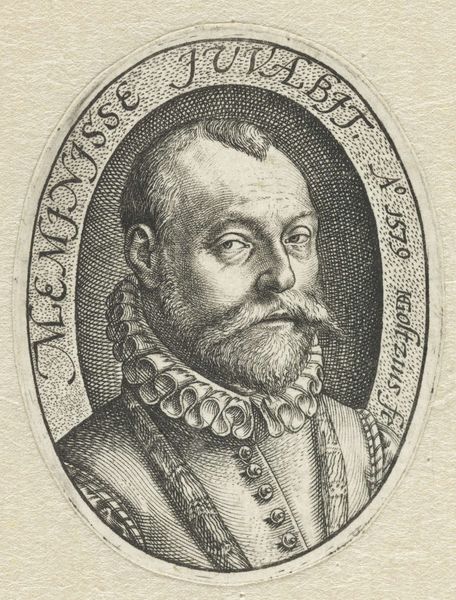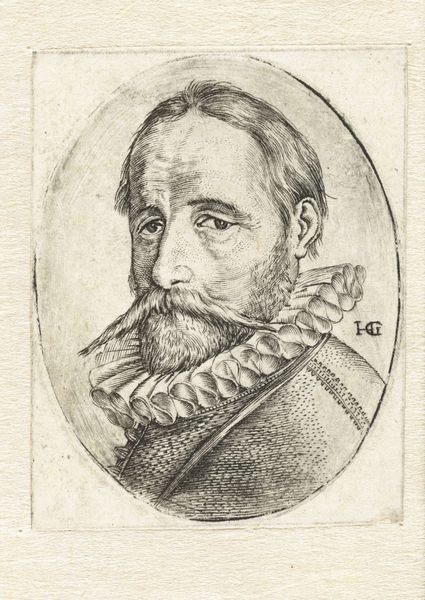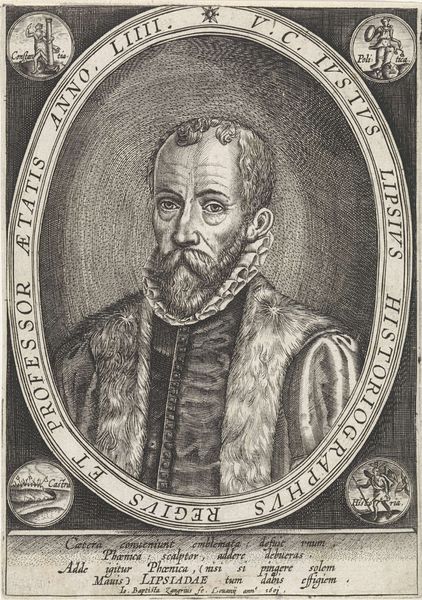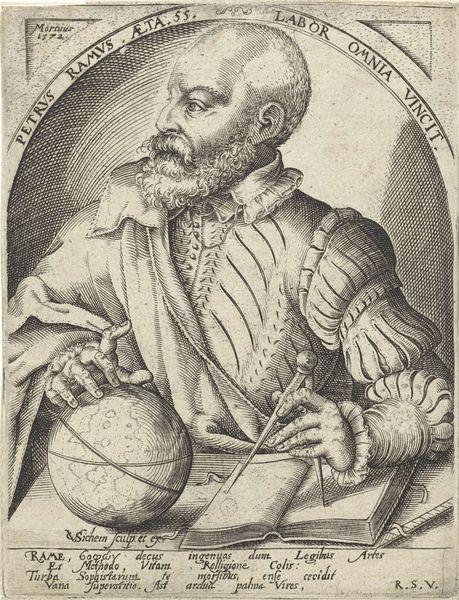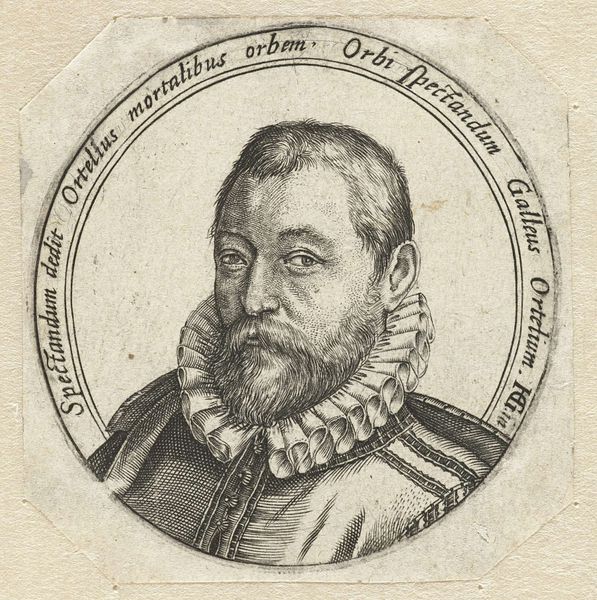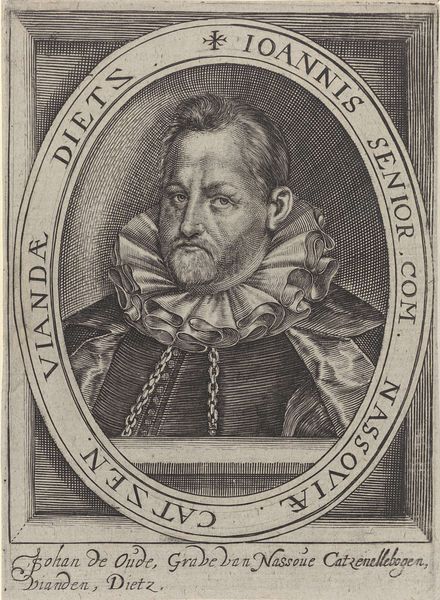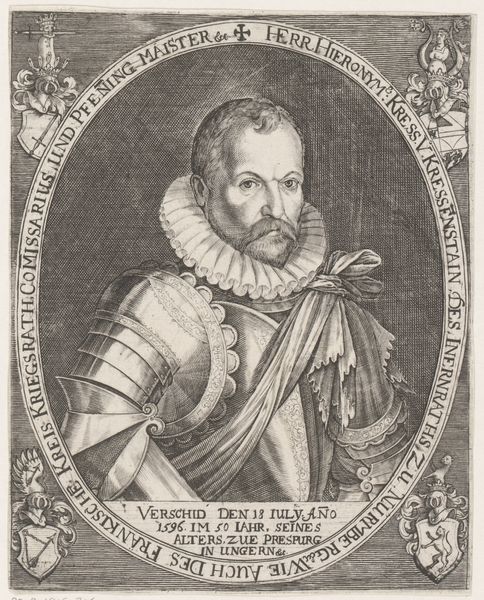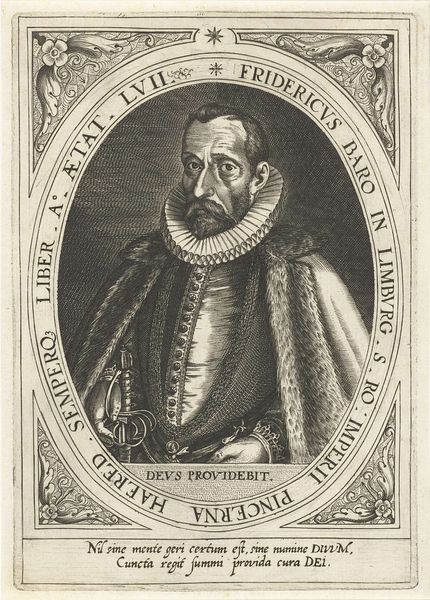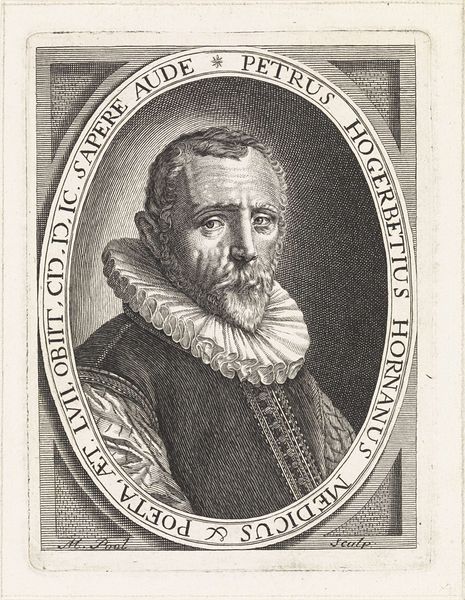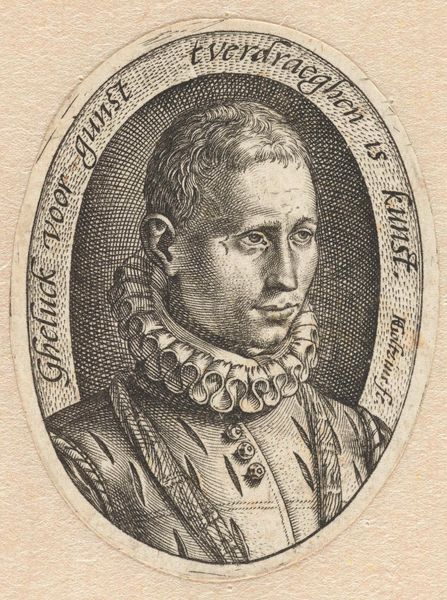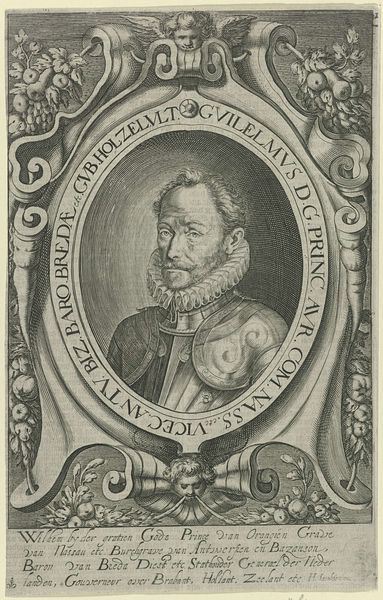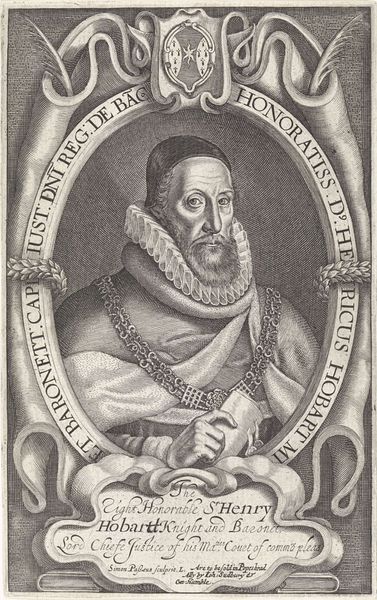
Dimensions: height 49 mm, width 36 mm
Copyright: Rijks Museum: Open Domain
Editor: This engraving from 1579 by Hendrick Goltzius, “Portret van een bebaarde man,” has an incredible level of detail. I'm curious to know, what underlying symbolic meanings or messages do you find conveyed in this image, given your expertise? Curator: The eyes tell us so much. Notice how they lock onto ours. Goltzius, even in portraying another, imbues the gaze with an intellectual weight that compels attention, hinting at layers beneath the surface. Look closer: what feelings does it evoke in you? Editor: It’s a confident gaze, but also quite stern. The man's expression does make me think he is proud, but why? What does the text framing the portrait, “Dracht goetwillich tast met mannekens," add to the interpretation? Curator: The inscription suggests, "The willing power feels with little men." Perhaps referencing leadership. But think also of Goltzius's skillful burin technique as "willing power" that depicts or feels alongside the average citizen. Note that the beard itself was, historically, a powerful marker of wisdom and status. Do you see it connecting this sitter to an archetype? Editor: The beard does evoke classical philosophers, actually! It’s as if he's associating himself with that lineage. Curator: Exactly. And in doing so, Goltzius connects not just the sitter, but the very act of image-making with history. Consider the image as an accumulation of symbolic layers, built intentionally. What stays with you now? Editor: Seeing those connections makes it a far richer experience. Now I recognize how seemingly straightforward portraits can actually transmit meaningful and intricate messages about identity, status, and history. Thanks so much!
Comments
No comments
Be the first to comment and join the conversation on the ultimate creative platform.
